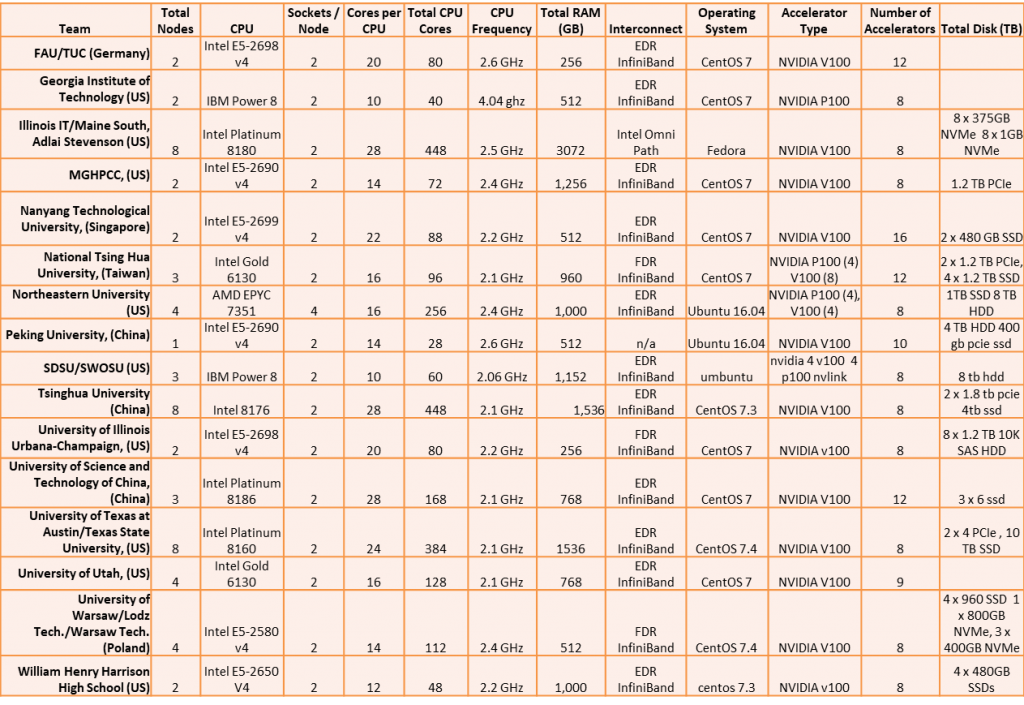The final configurations for each of the SC17 “Donnybrook in Denver” Student Cluster Competition have been released. Fortunately, each team received their equipment shipments on time and undamaged, so the teams are running the best versions of their clusters.
What’s really notable this year is the wide variety of configurations. Student Cluster Competition neophytes tend to think that with the 3,000 watt power cap every team would be using approximately the same configurations. But as you can see on the chart, the configs vary wildly. On the ultra small side is Team Peking’s single node GPU server. On the high side, we have multi-time champion teams Tsinghua and Texas with an eight node monsters.
Back in the day, an eight node student cluster was about average – with a 10 or 12 node cluster being the high-end of node counts. We saw 4-6 node systems, but they were considered to be too small to win the Overall Championship. How times change, right?
We’ve seen significant changes since just a year ago.
Today, the median node count is three, which is 25% smaller than the median at last year’s SC16 competition. While cores per CPU have risen significantly (20%), overall average CPU core count per cluster has dropped by close to 25% and the median CPU core count has dropped nearly in half.
Accelerator counts are up, not surprisingly, and many of the teams are using the latest NVIDIA V100 Volta GPUs. I’m expecting to see big LINPACK numbers from those teams using large numbers of GPUs, not surprisingly.
This sets up an interesting story line: Tsinghua has won the last two major competitions (ASC and ISC) with configurations that have more nodes than the other teams. However, the clear majority of teams believe that their “Small is Beautiful” approach is the correct path – who is correct? We’ll find out Thursday afternoon. Stay tuned…..
Posted In: Latest News, SC 2017 Denver
Tagged: Configurations, SC 2017


